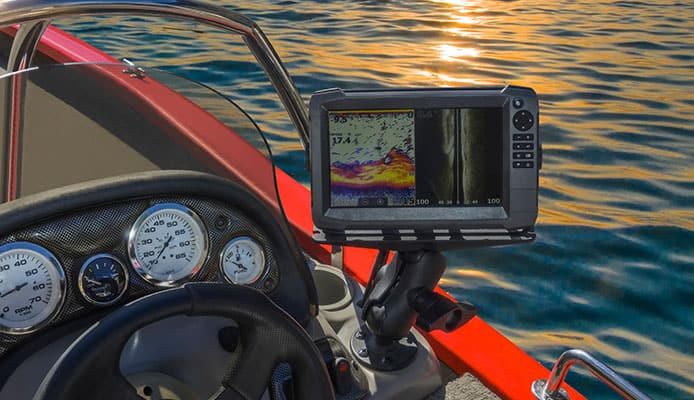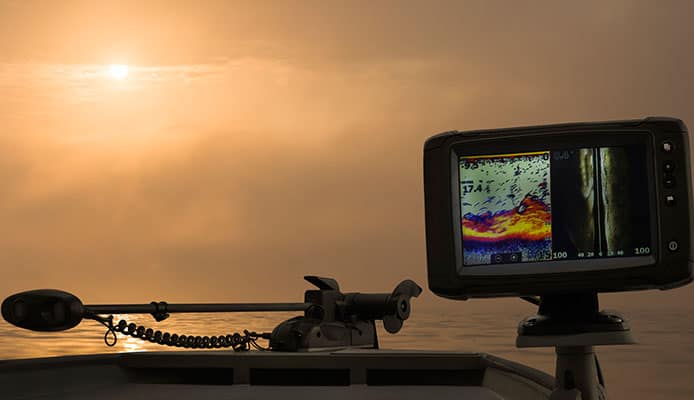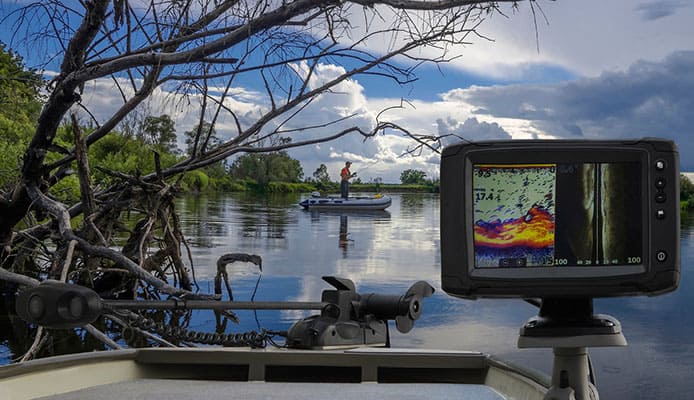
Looking for a quality and reliable fishing sonar but on a tight budget? You don’t have to stretch your budget or settle for a substandard unit. The best affordable fish finders under $200 reviewed below do a great job of locating fish and displaying what is underwater. Whether you fish from a kayak, canoe, or are an ice angler, you will find the best fish finder under 200 for your needs in this list.
OUR TOP PICK
Deeper PRO Smart Portable
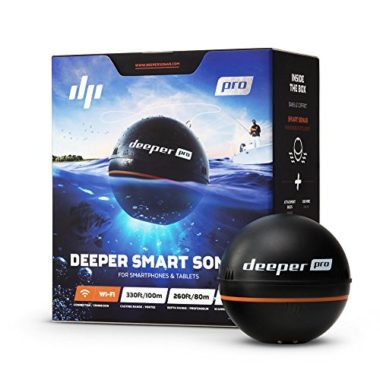
- Stand Out Features - Why We Love It
- Versatile fish finder for all types of fishing
- Ice fishing mode with a classic ice flasher display
- Boat mode for trolling from a kayak or boat
- Castable fish finder designed to float on water
- Shallow, deep, fresh and saltwater operation
- Dual-beam sonar for scanning and pinpointing fish
- Wireless connectivity via free App and WiFi hotspot
Dimensions: 2.6 x 2.6 x 2.6 in
Weight: 3.52oz
Operating Frequencies: 90kHz and 290kHz
Dual Beam: 15° or 55°
Casting Range: 330ft
Depth Range: 260ft
Operating Temperature: -4°F to 104°F
Compatibility: iOS and Android devices
EDITORS CHOICE
Garmin Striker Plus 4
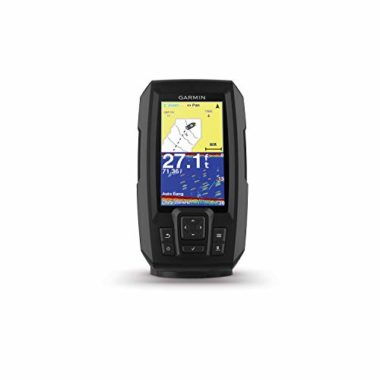
- Stand Out Features - Why We Love It
- Garmin CHIRP Sonar technology
- Built-in high-sensitivity GPS system
- Perfect size for mounting on a small vessel
- Multi-frequency dual-beam transducer
- Signal noise can be suppressed at greater depths
- Boat speed display
- Built-in map creation software
Dimensions: 3.9 x 1.8 x 6.9 in
Weight: 11.2oz
Operating Frequencies: 50/77/83/200 kHz
Transmit Power: 200W (RMS)
BEST VALUE
Garmin Striker 4 GPS
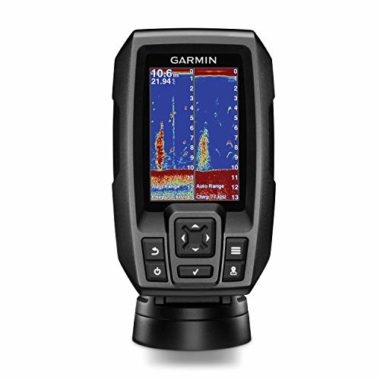
- Stand Out Features - Why We Love It
- Best cheap fish finder and value for money
- CHIRP and ClearVu scanning sonars
- High sensitivity GPS built-in
- Classic flasher format for ice fishing or vertical jigging
- Crisp fish arches with greater target separation
- Audible alarms and boat speed display
- Comes with a protective carrying kit
Dimensions: 3.6 x 1.6 x 5.9 in
Weight: 8 oz
Operating Frequency: 77/200 kHz
Transmit Power: 200W (RMS)/1,600W (peak-to-peak)
Depth Rating: 1,600ft freshwater, 750ft saltwater
Water Resistance Rating: IPX7
ReelSonar iBobber Wireless
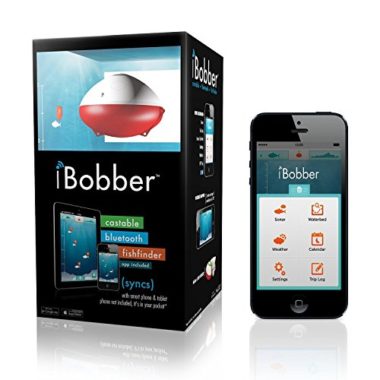
- Stand Out Features - Why We Love It
- Suitable for all kinds of fishing
- Castable sonar device for bank fishing
- Raw sonar and fish tagging views
- Depth-tagged fish icons color-coded by size
- Trip Log for saving detailed fish and hot spot logs
- Fish and strike alarms
- Built-in LED beacon
- Long 10+ hrs battery life
- Free app for iOS and Android, Google Watch and iWatch
Dimensions: 2 x 2 x 1 in
Weight: 0.16oz
Bluetooth Range: 100ft
Depth Range: 135ft
Compatibility: iOS 10.0 and later, Android 4.3 and later, Google Watch and iWatch
Eyoyo Underwater Fishing Camera
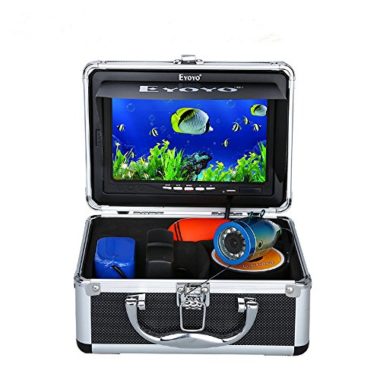
- Stand Out Features - Why We Love It
- High definition underwater camera with HD 1000TV lines
- Large high-definition color monitor
- 12 adjustable LED camera lights
- IP68 waterproof design
- Withstands ice fishing conditions
- Removable sun-visor for visibility in bright conditions
- Good battery life - can last 10 hours on a single charge
Dimensions: 9.2 x 8.2 x 5.2 in
Weight : 3.55lbs
Operating Temperature: -20 to +60°C
Water Resistance Rating: IP68
HawkEye Fishtrax 1C
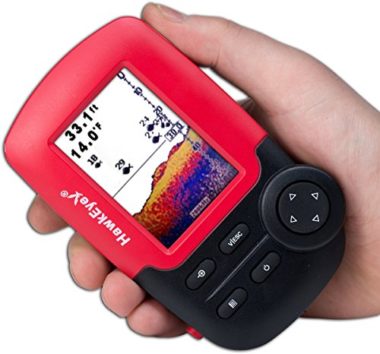
- Stand Out Features - Why We Love It
- Three operating modes: ice, fishfinder, and data
- High-definition TFTN color display
- Digital flasher real-time display
- Fish and depth alarms
- Two user-selectable frequencies
- 100-level sensitivity adjustment
- Multi-level depth ranges
- Auto-zoom bottom tracking
- Utilizes four AAA batteries
Dimensions: 6 x 3 x 2 in
Weight: 10.2oz
Operating Frequencies: 200kHz and 83kHz
Beam Angles: 14/26°
Depth Capability: Up to 240ft
Lowrance HOOK2 4X
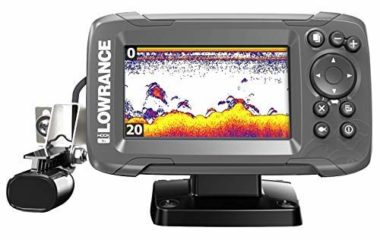
- Stand Out Features - Why We Love It
- Extremely easy to use and beginner-friendly
- Ideal size for boats with small console space
- Auto-tuning sonar
- Wide-angle, broadband sonar coverage
- Intuitive phone-like menu
- One-touch access to key features
- Multiple mounting positions
- Wide and clear high-resolution display
Dimensions: 3.3 x 6.5 x 3.8 in
Weight: 2.2lbs
Operating Frequency: 200kHz
Sonar Beam: 40°
Transmit Power: 200w RMS
Lucky Portable
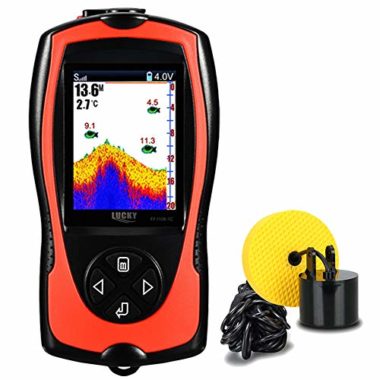
- Stand Out Features - Why We Love It
- Castable using the included float
- Mountable on a boat using the included bracket
- High frequency signal with a 45 degrees beam angle
- Fish and depth alarms
- Portable handheld sonar device
- Clear display on the colored TFT screen
Dimensions: 5.3 x 2.8 x 1.1 in
Weight: 14.1oz
Operating Frequency: 200Khz
Beam Angle: 45°
Depth Range: 328ft
Waterproof Rating: Level-4
Operational Temperature: 14°F to 122°F (-10°C to 50°C)
Measurement Units: M/℃, FT/℃, M/℉, FT/℉
Eyoyo Underwater Fishing DVR Video Camera
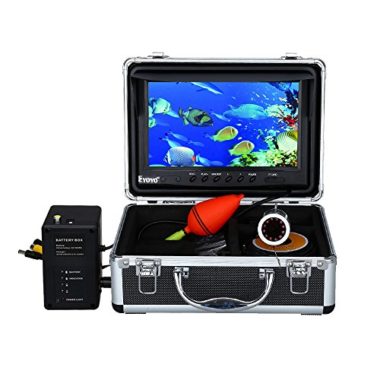
- Stand Out Features - Why We Love It
- Underwater fishing DVR video recording function
- High definition camera with HD 1000 TVL
- Adjustable infrared LED camera lights
- Large 9-inch color screen
- Removable sun-visor for readability in bright conditions
- Free 8GB TF card included
Dimensions: 11.4 x 9.4 x 5.5 in
Weight: 5.39lbs
Display Resolution: 640×480
Waterproof Rating: IP68
Lucky Wired & Wireless Portable
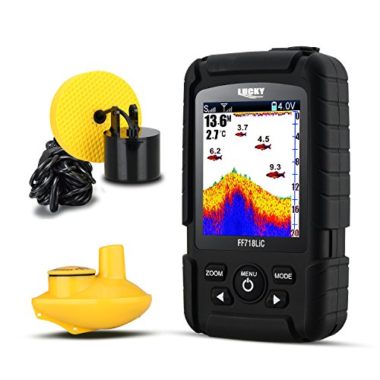
- Stand Out Features - Why We Love It
- Portable and castable fishing sonar
- Suitable for bank, boat, kayak, fresh, salt, and hard water fishing
- High frequency wired mode and low frequency wireless mode
- Floating and waterproof design
- Ice flasher and zoom function
- Three display color options - blue, red and gray
Dimensions: 4.9 x 2.8 x 1.2 in
Weight: 6.7 oz
Operating Frequencies: 200Khz wired mode, 125Khz wireless mode
Beam Angle: 45° wired mode, 90°wireless mode
Depth Capability: 328ft cable mode, 147ft wireless mode
Wireless Range: 328ft
How To Choose A Fish Finder Under $200- Buying Guide
As you can see, there are plenty of remarkable fishing sonars within your budget. Here are the features to consider to identify the very best fish finder under 200 for your fishing technique and platform.
Use
Keeping the intended use in mind as you choose a fishing sonar will guide you to the perfect unit for you. If you want an ice fishing fish finder, you will need one with the ability to withstand sub-zero conditions. If you will be mounting the unit on a boat, you will need to check the mounting options.
Type
Choose the type of fish finder that suits your type and style of fishing. There are fixed units designed to be mounted on a boat. Portable units ideal for traveling with. Castable units you can attach to a fishing line and cast from the shore or from a kayak. Ice fishing flashers that offer a real-time view of what is happening beneath the ice.
You might also be interested in:
Castable Fish Finder & Kayak Fish Finder
Transducer
The transducer is the technical component that sends sonar waves below the water. The transducer is, therefore, a very important part of a fish finder. Check what kind of transducer the fish finder you’re considering comes with and assess its operating frequency, beam angle, and wattage as follows.
Frequency
Transducers can have high or low operating frequencies or both. A high operating frequency returns more details and has a wide sonar coverage, which works well for fishing in shallow waters. Low frequency sonar waves travel down deep into the water and are ideal for deep water fishing. Dual-frequency sonar units have both low and high frequencies and work in both shallow and deep water.
Cone Angles And Beams
The sonar waves the transducer transmits into the water take the shape of a cone with a narrow or wide-angle. Narrow beams travel deep into the water while wide beams have broadband sonar coverage and can scan a wide area. Dual-beam units that emit both wide-angle and narrow sonar beams deliver more details about the subsurface world and can be used in both deep and shallow waters.
Wattage
Wattage is the power rating of the transducer. The higher the wattage, the more powerful a fish finder is. A powerful unit can send sonar waves further down into the water and return sonar readings faster. If you fish in deep waters, you will need a depth finder under 200 with a high wattage rating. A lower rating will do in shallow waters.
Display Screen Resolution
The transducer sends sonar readings to the screen unit. If you can’t see the display clearly, the whole fish finder will be rendered useless no matter how advanced the sonar technology is. The quality of the screen is a very important consideration. A good quality screen has a high resolution and displays crystal clear images of underwater composition.
Display Screen Colors
Most fishing sonar devices you will come across have screens that can display a wide range of colors, as color display provides more details and it is easier to distinguish between the objects displayed than with a black and white screen. A color display is therefore a superior option. The more the colors a fish finder can display, the better.
GPS System
Some of the cheap fish finders under 200 have built-in GPS systems. If you will be fishing in unfamiliar waters, GPS fish finders can track your location and let you mark waypoints to find your way around the water. You can also save favorite fishing spots so you can find them again easily in the future.
Portability
If you’re looking for a fish and depth finder you can use on a wide range of waters and fishing platforms or when hopping from ice hole to ice hole, you need a portable fish finder that is compact and lightweight. Some portable fish finders even come with carrying cases.
Power
Sonar devices require a power source. Some require a direct connection to a power outlet, some have rechargeable batteries while others utilize disposable batteries. Check what power source the unit you’re considering uses. If you opt for a battery-powered unit, check that its rated battery life is sufficient for your needs.
Waterproof
The transducer comes into contact with water and should be waterproof. The screen unit should be able to withstand rain, splashes, and accidental drops into the water. Be sure to check the water resistance rating of the model you choose. Some units come with a cover that protects the display unit in the event of a downpour.
Design and Durability
Choose a unit with a large, easy to read display, intuitive controls, a simple menu system, and mounting options that suit your fishing platform. Pay attention to the construction details and warranty and check out the fish finder under 200 reviews by users to ensure that you end up with a rugged unit that can withstand the elements and hold up well.
FAQs
Q: What Is A Fish Finder?
A fish finder is a sonar device designed to use sound waves to locate fish and identify other objects below the water surface.
Q: How Do Fish Finders Work?
A fish finder has two components: the transducer and the screen unit. The transducer sends sonar signals into the water. These signals hit fish and other objects in the water and bounce back to the transducer, which translates the returned signals and displays images of what is below the water on the screen unit.
Related Post: How To Read A FishfinderQ: Why Do I Need A Fish Finder?
Without the ability to see underwater, you can only rely on chance when casting or jigging. A fish finder will give you vision below the water. It will show you whether there are fish, how big they are, and where they are hanging out. It will also display the bottom contour, water temperature, and depth information. It will definitely help you catch more fish and enjoy the fishing experience more.
Q: Can I Sync my Fish Finder with my Smart Phone or Tablet?
If you have a smart fish finder that can connect to a smartphone or tablet wirelessly via Bluetooth or WIFI hotspot, you can sync it with your mobile device and view the sonar readings from there.
Q: Can I Use the Same Fish Finder for Shallow Water, Deep Water, and Ice Fishing?
Yes you can. You just have to get a fish finder that comes with a dual frequency/beam transducer that transmits both wide-angle and narrow sonar beams. The fish finder should also have a classic ice fishing flasher built-in and be able to withstand subzero conditions.
Globo Surf Overview
You don’t have to break your budget to get a quality and reliable fish finder. The best affordable fish finders reviewed here may not have sophisticated bells and whistles but they will show you the fish, fish-holding structure, bottom, depth, and water temperature accurately. They will help you learn the water you’re fishing, land more fish and enjoy fishing even more!



